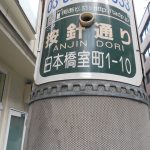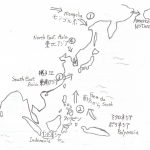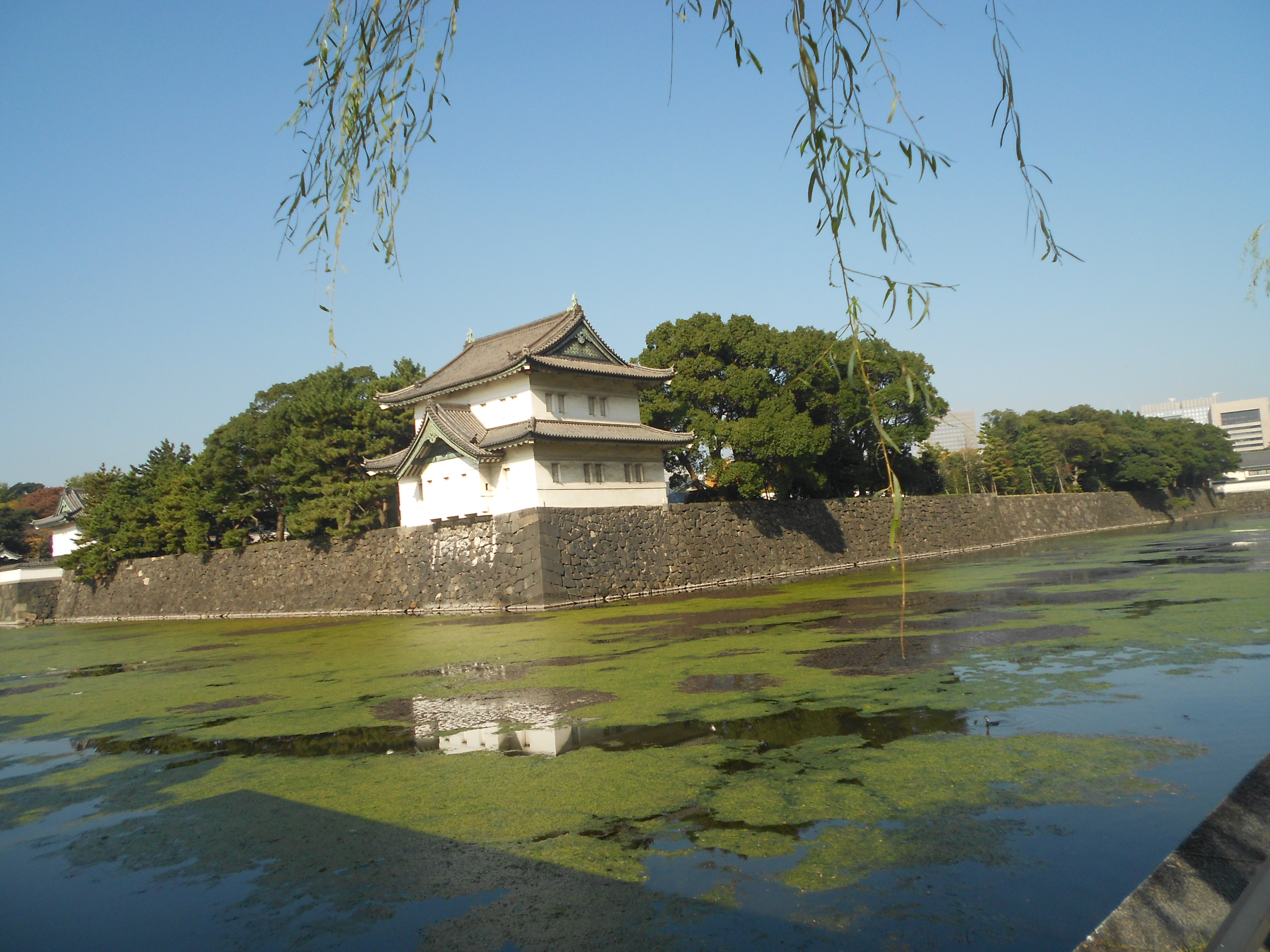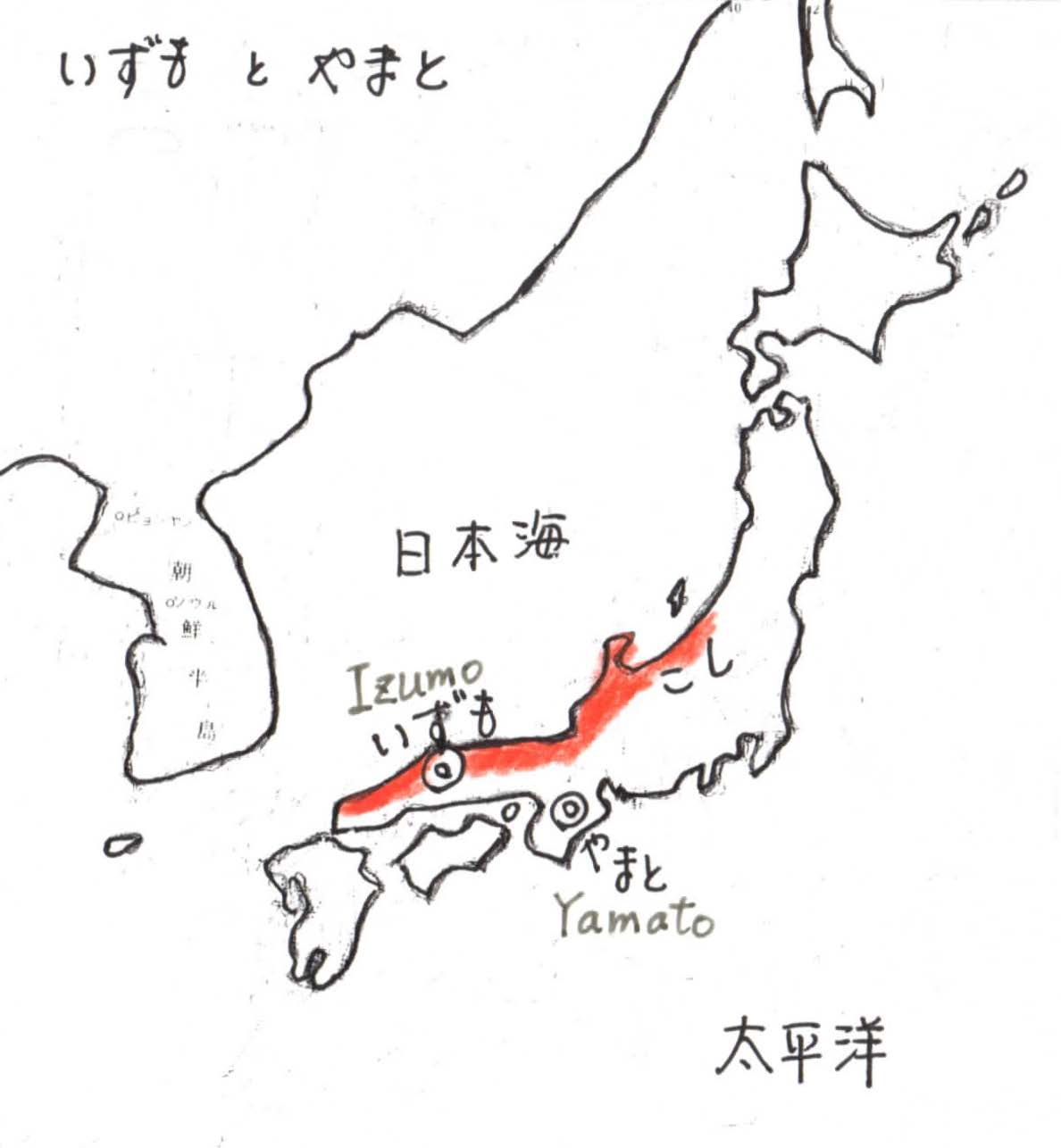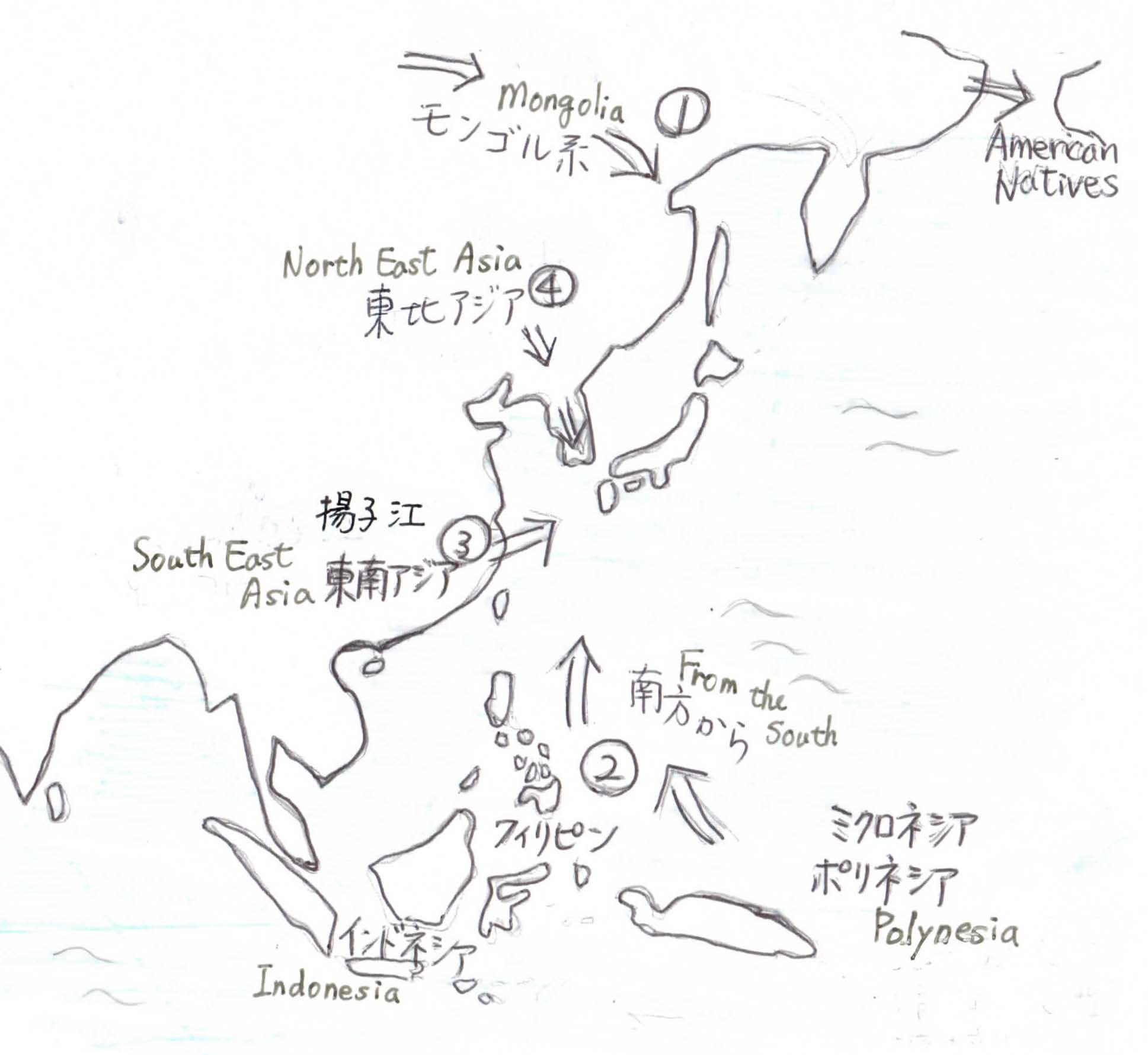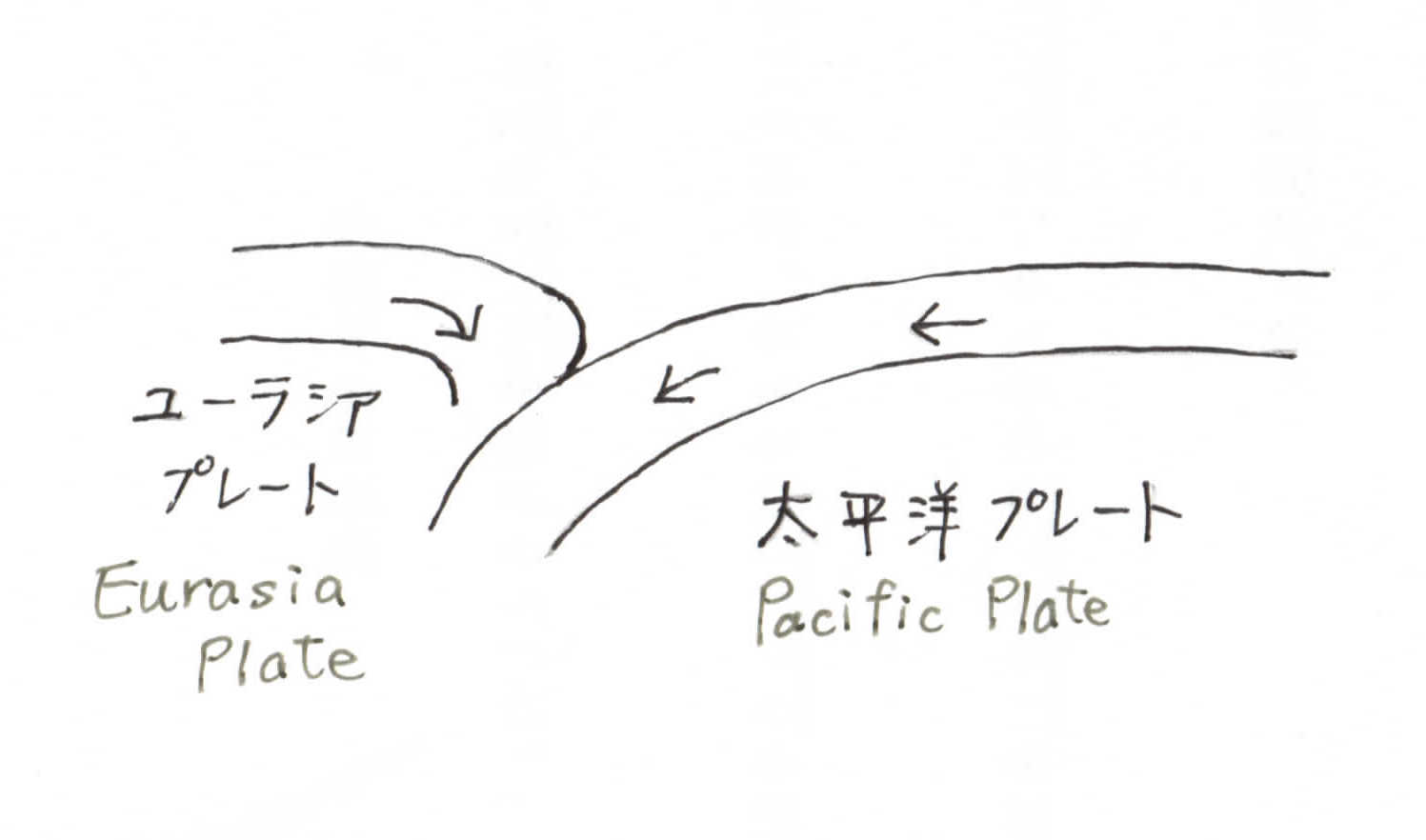What is the original Japanese cooking? Tempura? Sukiyaki?
No, no. The original Japanese cooking is “Onabe”. Why?
☆ 1 Looking back to the “Jomon Age” (10,000 years ago~3rd century BC )
In the hunting and gathering life of the Jomon Age, people gathered tree nuts from forests and tried to make them food. “Kurumi” (walnut) and “kuri” (chestnuts) could be eaten as they were, but “donguri” (acorn) and “tochinomi” (horse chestnut) were very bitter and too hard to eat.
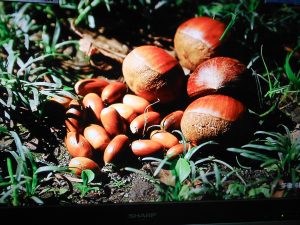
From around 6,000 years ago, people devised two ways to prepare nuts. One way was to sundry the tree nuts and make them into a powder. Then, they ate them like dumplings. Another way was to boil them in hot water in a pot, and soak them in water many times to drain and remove the toxins from the nuts so that they could eat them. (*1 ) (*2 )
☆ 2 “Good water” and “Jomon earthen pot”
To boil the tree nuts, “water” and “pots” were necessary.
As for the “water”, there were a lot of high mountains in Japan (over 70% of the land is mountains now) and a lot of rain. Mountain slopes were so steep that rainwater and snow-melt water permeated and was filtered through the ground of the mountains and became spring water. Clean and pure water sprang from many places. Also many rivers were flowing and clean water was almost always available, and people could drink it.
And “pots” were also necessary, so earthenware was made from quite early days of the Jomon Age, called “the Jomon earthenware”. (*3 )
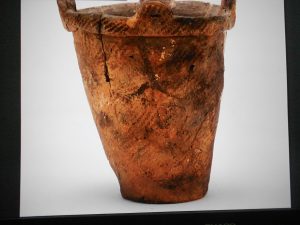
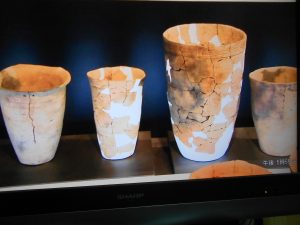
Having “water” and “earthen pots”, people could boil water and put vegetables, fish, meat, anything in the pot. They could eat anything by cooking it in the pots. After rice farming was introduced into Japan, rice could be cooked with water in the pot too and it became a delicious food. Uncooked rice could be preserved as a grain for more than one year after harvest. As long as they had water and pots, they could eat delicious rice anytime, so rice farming spread fast in the western Japan.
“Boiling” is the original cooking way in Japan, on the other hand “roasting” is the original cooking way in the culture of livestock farmers.
☆ 3 Surrounding the fire
In warm regions of Japan, a family sat around a “Takibi (fire)” outside the house, or in cold places a pot was hung over “Irori (fireplace)” in the center of the house, and the family ate seated around the fire.
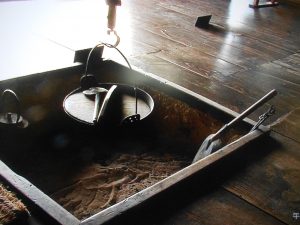
They scooped the hot food with a big spoon directly from the pot over fire into their own bowls. Holding the bowl with the left hand, and the chopsticks in the right hand, they picked vegetables and fish with chopsticks, and drank the soup sucking directly from the edge of the bowl. The soup was so hot that their lips easily burned. To drink the soup and not get burned, they sucked air between the lips and soup. This made a slurping noise.
Over a long time, this “habit of sucking with air in order not to get burned” became a settled custom. So when we drink iced coffee that is not hot, we still drink with air and make a slurping noise. When we eat not only liquid dishes like a hot soba but also the cold “zarusoba” with no soup, we suck up with the air making the slurping noise also.
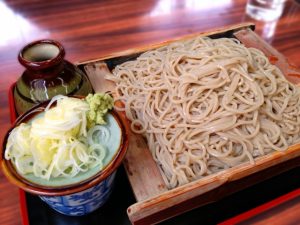
Children are not good at sucking with air at first, but they learn how to suck with air as they learn how to use chopsticks.
More information ・・・
☆ 4 Anything wooden
Because there was not much space to put things around the fire, people had a bowl of cooked soup in their left hand, and the chopsticks their right hand almost all the time. So they did not use spoons to eat. They ate everything with chopsticks. Even now, we eat miso soup, noodles like udon, soba and ramen only with chopsticks, so we have to drink the soup from the bowl directly having it in our left hand.
Japanese utensils were made of wood, which people could easily get from the surrounding nature, and they were not heavy. (Korean and Chinese people feel strange to see Japanese people eating ramen holding a heavy ramen bowl with the left hand.)
☆ 5 No tables?
People ate with chopsticks their right hand and a bowl their left hand, sitting on the floor around the fire, so there was no table. In the later days, when they ate in a room without “Irori (fire)”, they put dishes on a small individual low table “Ozen” (about 40 cm x 40 cm) about 30 cm tall, for each of individual’s meal. Even in the case of a wedding ceremony, many individual tables were set in a row.
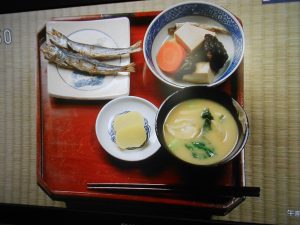
It was not until the1920s when we first started to use a table with all family members sitting around it. It was a low, round-shaped table in a living room.
The high dining tables began to spread to the ordinary household after we built apartment buildings with dining kitchens after World War II.
☆ 6 The taste of ingredients is important
The original Japanese cooking was just to boil the ingredients with water in a pot. So people ate it with seasoning such as “ponzu”, or added “soy sauce” or “miso” to the soup in the pot to make it more tasty. Japanese cooking was very simple, so the original ingredients were used as they were, and the taste of the ingredient itself was important. This is a custom which has been handed down to the present day, to the other modern Japanese cuisine too.
☆ 7 “Chawan” and “Yunomi”
Have you ever thought why a “Chawan ( tea bowl)” is for putting rice and “Yunomi ( hot water bowl)” is for drinking tea?
In the era of Nobunaga and Hideyoshi (16th century), porcelain bowls were brought into Japan from China and Korea along with the custom of “drinking tea”. The surface of the porcelain was soft and smooth with a glaze, so it was highly prized and it was said that one “tea bowl” was as precious as one castle.
In the beginning, the luxurious “tea” and the “tea bowl” were for samurai and wealthy merchants, not for ordinary people. But the porcelain was gradually made in Japan too and anyone could use them. The glazed porcelain bowl was more beautiful, cleaner, easier to wash, and lasted longer than the wooden one. People started to use the porcelain bowls for rice and they were called “tea bowl for rice” because they used “tea bowl” for rice. As this name gradually became shorter and it was called only a “Chawan (tea bowl)” for rice.
For drinking, the tea was too expensive for ordinary people. They were usually drinking just hot water because the water in Japan was clean and good for drinking. So it was called “Yunomi (hot water cup).
In a word
Since the Jomon Age, the original cooking in Japan was “boiling” in a pot and people ate dishes directly from the pot over the fire to their own bowls. So it was very hot and easily got burned. They drank with air between the lips and the soup making a slurping noise. The custom was deeply settled in our habit. We eat not only the hot noodles but also cold noodles like“zarusoba” in the same way.
――――― (*) —————
*1 “The mystery of the origins of Japanese customs 99 ” Higuchi Kiyoyuki, Production report 1976
*2 In a NHK TV program named ” Small Journey” on February 12, 2017, a small village named Yamakumada in Murakami city, Niigata Prefecture, was introduced. In that village one old lady was still making rice cakes from Tochinomi ( horse chesnuts ). It was told from old days that the horse chesnuts had toxins and too bitter to eat, and even bears didn’t eat them.
She boils them and soaks them in water, rubs them with ashes, and soaks them again in water and changes the water many times for about two more weeks to remove the toxins. It is a very hard, troublesome work, but she can keep the nuts food for winter. So village people have been eating in this way for a long time, for more than thousand years. But she wondered how long this tradition will continue?
☆ 3 “Jomon” (縄文) literally means “the earthenware with the patterns made with a “ rope” ( 縄 ). This name of the earthenware became the name of the Age, “Jomon Age”. (10,000 years ago~3rd century BC)

